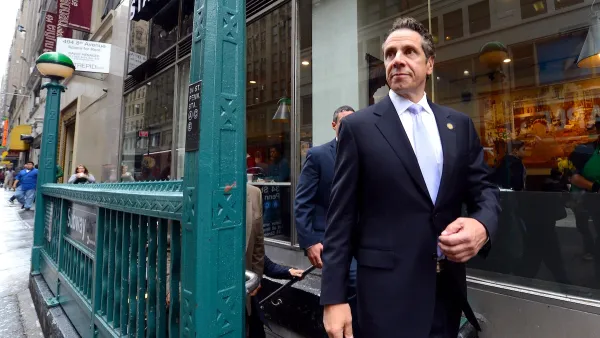New York magazine recently convened a debate between two leading voices of an ongoing conversation in New York City: what to build and what to preserve.
Justin Davidson introduces a debate pitched as "Preservationist vs. Pro-Development":
"Although the Landmarks Law has protected 1,400 buildings and created more than 100 historic districts, it doesn’t have anything to say about how those buildings are used, or about the lives lived in and around them. It also doesn’t cover much of what’s under threat today: small businesses, neighborhood character, architecturally unremarkable buildings and blocks, views, culture, community glue, and so on."
On the preservationist side of the debate is Jeremiah Moss, author of the Vanishing New York blog. On the pro-development side is Nikolai Fedak, who runs the New York YIMBY blog. The goal of the debate, according to Davidson, is to seek "common ground where they can both live."
From the beginning, the debaters agree that the cost of housing in New York is threatening the city's exceptionalism and diversity—they just don't agree on how to address the threat.
Fedak's pro-development stance goes on to support new zoning that allows for more residential cross the board. In lieu of updated zoning, according to Fedak, New York is repeatedly stuck with shoddy hotel developments and land zoned for obsolete industrial uses.
Moss's argument supports the notion of New York as "unpredictable and unfamiliar, with a kind of chaos that feeds creativity." He argues that the contemporary people coming to New York and shaping it are making New York into something bland and boring.
Davidson endeavors to reconcile the dueling points of view, but doesn't get very far. The entire debate is well worth reading to hear two well-informed and passionate advocates make their case for everyone to consider.
FULL STORY: Which New York Is Yours? A Fierce Preservationist and a Pro-Development Blogger Debate

Planetizen Federal Action Tracker
A weekly monitor of how Trump’s orders and actions are impacting planners and planning in America.

Restaurant Patios Were a Pandemic Win — Why Were They so Hard to Keep?
Social distancing requirements and changes in travel patterns prompted cities to pilot new uses for street and sidewalk space. Then it got complicated.

Map: Where Senate Republicans Want to Sell Your Public Lands
For public land advocates, the Senate Republicans’ proposal to sell millions of acres of public land in the West is “the biggest fight of their careers.”

Orange County, Florida Adopts Largest US “Sprawl Repair” Code
The ‘Orange Code’ seeks to rectify decades of sprawl-inducing, car-oriented development.

Maui's Vacation Rental Debate Turns Ugly
Verbal attacks, misinformation campaigns and fistfights plague a high-stakes debate to convert thousands of vacation rentals into long-term housing.

San Francisco Suspends Traffic Calming Amidst Record Deaths
Citing “a challenging fiscal landscape,” the city will cease the program on the heels of 42 traffic deaths, including 24 pedestrians.
Urban Design for Planners 1: Software Tools
This six-course series explores essential urban design concepts using open source software and equips planners with the tools they need to participate fully in the urban design process.
Planning for Universal Design
Learn the tools for implementing Universal Design in planning regulations.
Heyer Gruel & Associates PA
JM Goldson LLC
Custer County Colorado
City of Camden Redevelopment Agency
City of Astoria
Transportation Research & Education Center (TREC) at Portland State University
Camden Redevelopment Agency
City of Claremont
Municipality of Princeton (NJ)





























